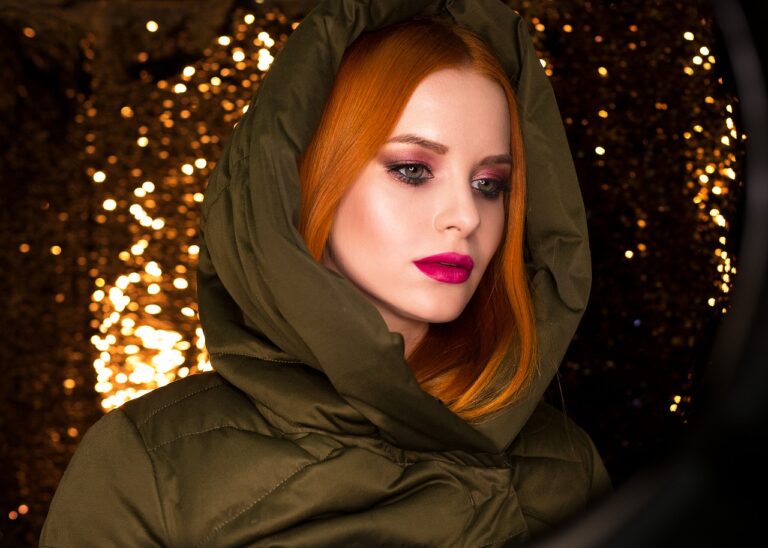The Role of Virtual Influencers in Fashion Marketing: Laser book 247, Silverexchange, 11xplay pro
laser book 247, silverexchange, 11xplay pro: Virtual influencers have taken the world by storm in recent years, particularly in the fashion industry. These digital personalities, created using computer-generated imagery (CGI), have become powerful marketing tools for fashion brands looking to engage with a younger, tech-savvy audience. But what exactly is the role of virtual influencers in fashion marketing? And how effective are they in driving sales and brand awareness? In this article, we’ll explore the impact of virtual influencers on the fashion industry and delve into their role in modern marketing strategies.
The Rise of Virtual Influencers
In the age of social media and influencer marketing, virtual influencers have emerged as a new breed of influencers with immense popularity and influence. These digital avatars, such as Lil Miquela and Shudu Gram, have amassed millions of followers on platforms like Instagram and TikTok, making them valuable assets for fashion brands seeking to reach a diverse and engaged audience.
Virtual influencers are often created by teams of artists, designers, and developers who craft their appearance, personality, and content to appeal to specific demographics. Their carefully curated feeds feature high-quality images, engaging captions, and sponsored content in collaboration with fashion brands, beauty products, and lifestyle companies.
The Role of Virtual Influencers in Fashion Marketing
Virtual influencers play a crucial role in fashion marketing by helping brands connect with consumers in a more personalized and innovative way. Unlike traditional influencers, virtual avatars offer a unique blend of creativity, authenticity, and storytelling that resonates with today’s digital-savvy consumers.
1. Creating Engaging Content: Virtual influencers are masters at creating captivating and visually appealing content that grabs the attention of their followers. From high-fashion photoshoots to behind-the-scenes videos, these digital personalities provide a fresh and exciting perspective on the latest trends and styles.
2. Building Brand Awareness: By partnering with virtual influencers, fashion brands can increase their visibility and reach new audiences that traditional marketing strategies may not reach. Virtual influencers have a global appeal and can attract followers from different countries and cultures, helping brands expand their reach and build brand awareness on a global scale.
3. Driving Sales: Virtual influencers have proven to be effective in driving sales and generating revenue for fashion brands. Their sponsored content and product endorsements have a significant impact on consumer purchasing decisions, leading to increased sales and conversions for brands that collaborate with them.
4. Fostering Audience Engagement: Virtual influencers excel at fostering audience engagement and building meaningful relationships with their followers. By interacting with fans through comments, likes, and direct messages, virtual avatars can create a sense of community and connection that keeps followers coming back for more.
5. Inspiring Creativity and Innovation: Virtual influencers push the boundaries of creativity and innovation in fashion marketing, inspiring brands to think outside the box and experiment with new ideas and concepts. Their unique aesthetic and storytelling capabilities challenge traditional marketing norms and spark new trends in the industry.
The Impact of Virtual Influencers on the Fashion Industry
The rise of virtual influencers has had a profound impact on the fashion industry, revolutionizing the way brands market their products and connect with consumers. These digital avatars have disrupted traditional marketing strategies and forced brands to adapt to the changing landscape of influencer marketing.
1. Redefining Beauty Standards: Virtual influencers have challenged conventional beauty standards by showcasing a diverse range of appearances, styles, and identities. These digital avatars promote inclusivity, diversity, and self-expression, encouraging consumers to embrace their individuality and uniqueness.
2. Driving Technological Innovation: The creation of virtual influencers has spurred technological innovation in the fashion industry, leading to advancements in CGI, artificial intelligence, and virtual reality. Brands are increasingly leveraging these technologies to create immersive and interactive experiences that engage consumers in new and exciting ways.
3. Enhancing Brand Authenticity: Virtual influencers have raised questions about authenticity and transparency in influencer marketing, prompting brands to be more mindful of their partnerships and collaborations. By working with virtual avatars, brands can maintain control over their messaging and ensure that their values and ethos align with those of the influencer.
4. Expanding Global Reach: Virtual influencers have the ability to transcend geographical boundaries and reach a global audience with diverse interests and preferences. Brands can leverage the international appeal of virtual avatars to connect with consumers in different markets and cultures, expanding their reach and influence on a global scale.
5. Driving Social Change: Virtual influencers have the power to drive social change and advocate for important issues such as sustainability, diversity, and inclusion. These digital avatars can use their platforms to raise awareness about social causes and inspire positive change in the fashion industry and beyond.
The Future of Virtual Influencers in Fashion Marketing
As virtual influencers continue to gain popularity and influence in the fashion industry, their role in marketing strategies is only set to grow in the coming years. Brands will increasingly rely on virtual avatars to engage with consumers, drive sales, and enhance brand authenticity in a digitally-driven world.
1. Evolution of CGI Technology: The development of CGI technology will play a crucial role in shaping the future of virtual influencers, enabling brands to create even more realistic and lifelike digital avatars. As CGI technology continues to advance, virtual influencers will become increasingly indistinguishable from human influencers, blurring the lines between reality and fantasy.
2. Personalization and Customization: Brands will increasingly focus on personalization and customization in their collaborations with virtual influencers, tailoring content and products to meet the unique preferences and tastes of individual consumers. Virtual avatars will play a key role in shaping personalized marketing strategies that resonate with diverse audiences and drive loyalty and engagement.
3. Integration of Artificial Intelligence: The integration of artificial intelligence (AI) will enable virtual influencers to interact with consumers in real-time, responding to questions, comments, and feedback with personalized and engaging responses. AI-powered virtual avatars will enhance audience engagement and foster meaningful connections between brands and consumers in a hyper-connected world.
4. Emphasis on Sustainability and Social Responsibility: Virtual influencers will continue to advocate for sustainability, social responsibility, and ethical practices in the fashion industry, using their platforms to raise awareness about important issues and promote positive change. Brands that collaborate with virtual avatars will be expected to uphold high standards of sustainability and social responsibility, aligning with the values and beliefs of today’s socially-conscious consumers.
5. Collaboration and Partnerships: Virtual influencers will collaborate with brands across various industries, including fashion, beauty, technology, and lifestyle, to create innovative and compelling content that resonates with diverse audiences. These partnerships will drive creativity, innovation, and experimentation in marketing strategies, inspiring brands to think outside the box and explore new opportunities for growth and engagement.
In conclusion, virtual influencers have become integral to fashion marketing strategies, offering brands a unique and innovative way to engage with consumers in a digital age. These digital avatars have redefined beauty standards, driven technological innovation, and inspired creativity and social change in the fashion industry, shaping the future of influencer marketing. As brands continue to leverage the power of virtual influencers, we can expect to see more personalized, immersive, and authentic marketing experiences that resonate with consumers on a global scale.
—
**FAQs**
Q: Are virtual influencers real people?
A: Virtual influencers are not real people but rather computer-generated avatars created using CGI technology. These digital personalities are designed to look and behave like human influencers, engaging with followers and producing content on social media platforms.
Q: How do virtual influencers make money?
A: Virtual influencers make money through sponsored content, brand partnerships, product endorsements, and affiliate marketing. Brands pay virtual avatars to promote their products and services to their followers, generating revenue for both the influencer and the brand.
Q: Are virtual influencers ethical?
A: The ethics of virtual influencers are a topic of debate in the influencer marketing industry. While virtual avatars can be used as a creative and innovative marketing tool, brands must be transparent about their use of CGI technology and ensure that virtual influencers align with their values and messaging.






